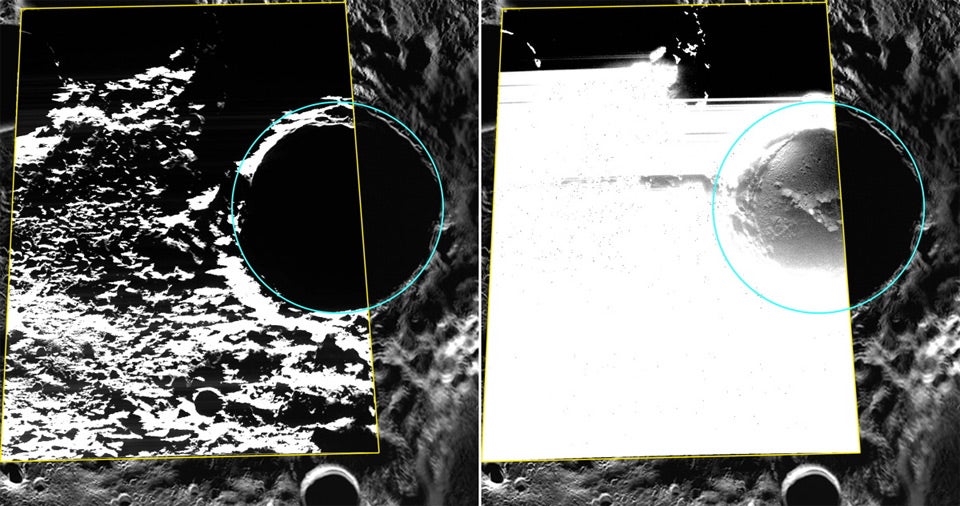Water on Mercury photographed by Nasa for the first time in 'permanently shadowed' craters
Images confirm that the planet closest to the Sun has 'recent' water deposits

Nasa has taken the first ever pictures of water ice on Mercury – the permanently-roasting planet closest to the Sun in our Solar System.
It might sound counter-intuitive to find ice on a planet where surface temperatures hit highs of 430 degrees Celsius every day (a Mercury day is equivalent to 58 Earth days) but impact craters on the poles permanently shadowed from the Sun have been found to provide some much needed shade.
Scientists have thought this might be the case since the mid-1990s, when radio telescopes scanning the planet found areas that strongly reflected radar signals (a good sign that ice is present) with this most recent study is the first to provide optical proof.
The scientist examined a number of impact craters situated around Mercury’s north pole (including the largest, Prokofiev, an indentation just under 70 miles wide) and found that the deposits were made surprisingly recently, with the boundaries of the ice defined by sharped edges not yet smoothed out by time.
“The sharp boundaries indicate that the volatile deposits at Mercury’s poles are geologically young,” wrote the study’s authors in the journal Geology, “and either are restored at the surface through an ongoing process or were delivered to the planet recently.”
If the water was ‘delivered recently’ then it could suggest new mechanisms in the distribution of water-ice in the Solar System – research that might have implications for our own Moon, which is also believed to contain water-ice in areas of permanent shadow.
"If you can understand why one body looks one way and another looks different, you gain insight into the process that's behind it, which in turn is tied to the age and distribution of water ice in the solar system," study lead author Nancy Chabot said. "This will be a very interesting line of inquiry going forward."
Join our commenting forum
Join thought-provoking conversations, follow other Independent readers and see their replies
Comments